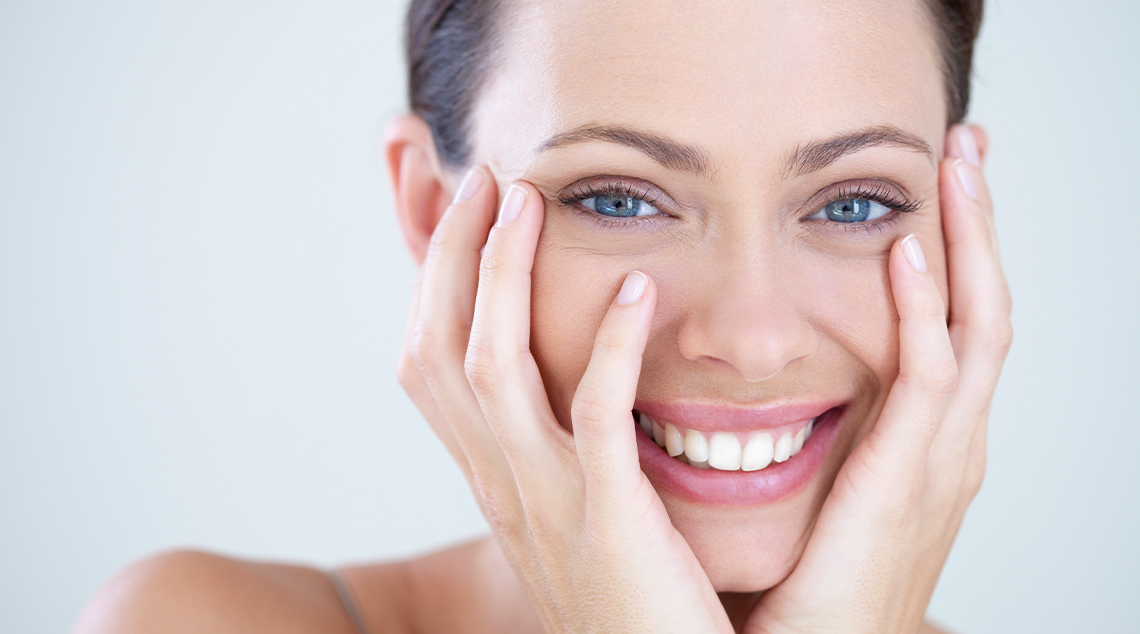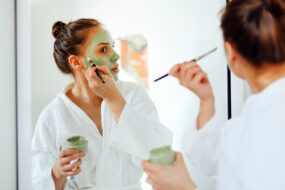Do your nails need a break from manicures to stay healthy?
Regular manicures keep fingernails in shape and looking pretty. But below the polished surface, they may need some extra TLC. Here is how to look after your nail health.
For many, having a manicure every few weeks is just as much a part of their beauty routine as having a haircut or getting a facial.
And judging by the sheer volume of nail salons across the country, it’s clear manicures remain in high demand, with influencers and celebrities further popularising add-on services such as nail art and extensions.
But if you’re not actively caring for your nails in the process, experts say you risk everything from a weakened nail bed and damaged cuticles to in-grown nails and even bacterial infections.
Should you skip manicures for healthier nails?
While there’s nothing wrong with self-care and a little pampering, taking a break between manicures gives you a chance to examine the health of your nails, and moisturise the cuticle and nail bed.
“Unlike your skin, nails don’t breathe – they aren’t a living tissue,” Buff Nail Studios founder Emma Forrest says.
“However, it’s important every few months to have nail products completely removed from your nails to check in on the health of your nails, to ensure nothing out of the ordinary is happening.”
3 tips for healthier nails
Amp up hydration
According to Emma, a healthy nail bed requires adequate hydration, which is why a daily dose of cuticle oil or balm is essential.
“This keeps your nails and surrounding tissue hydrated, which helps to ensure you don’t have brittle nails caused by dehydration, and prevents issues like hangnails and dry cuticles,” Emma says.
“Moisturised nails also help to encourage blood circulation, in turn stimulating nail growth.
“I would extend this nail health practice to the feet as well, and add in a hand or foot cream for an increased dose of hydration.”
Break bad habits
When it comes to nail health, or a lack of nail care, nail technicians have seen it all, Emma says, whose No.1 peeve is people who peel off their polish.
“I don’t think people realise when they do this, they are ripping layers of their nail off with it, which leads to thinner, weaker nails – one of the most common complaints we hear from clients,” she says.
With minimalist nails becoming more popular, Emma hopes more manicure devotees will favour
a more natural look, away from nail extensions, which are both time-consuming and high-maintenance.
“We love to encourage people to embrace their natural nails and commit to a journey of natural nail growth,” Emma says.
“With the right products and care, everyone can have the lovely, long nails they dream of.”
Find the best salon
Acrylics and gels often get lumped together for damaging the nail bed, but according to Emma, the nail technician is more likely to be responsible for any underlying damage than the product itself.
“All good-quality nail formulations have their place and provided they’re applied and removed correctly, they should cause minimal damage to the nails,” Emma says.
“The root cause of nail damage is generally the nail technician, not the product, and this is why it’s so important to see a nail tech who is trained and educated on nail structure, health and anatomy.”
For this reason, Emma recommends researching your local nail salons in order to find a reputable technician who is well-trained, practises good hygiene, and consults with you at the beginning of your service about your nail health.
“Don’t chase the fastest, cheapest place possible as this often means corners are being cut, and the time-saving factor can often mean less care is taken,” Emma says.
This logic extends to pedicures, but if you’re cautious about the risk of in-grown toenails, consider getting a pedicure at a podiatrist instead.
How to avoid nail health complications
According to Melbourne podiatrist Joseph Frenkel, manicures and pedicures are a safe procedure provided they’re performed by someone with a solid understanding of infection control standards.
“The issue is that the beauty industry is deregulated, which means anyone is able to open a nail salon and provide nail treatments, irrespective of their qualifications, experience and hygiene standards,” Joseph says.
“Therefore, the potential for nail health to be compromised is high, especially for issues concerning bacterial and fungal infections, nail bed trauma and scarring, nail ridging from excessive cuticle removal, in addition to discolouration, splitting and thinning on the nail plate.”
To help reduce the risk of nail health complications, Joseph suggests doing some research into the hygiene standards of your nail salon before treatments.
“Observe whether the water is changed, and whether new or sterilised tools are used for each
client, and whether nail technicians use gloves, hand sanitation and (undertake) regular cleaning of treatment areas,” Joseph says.
“If you’re paranoid, bring your own sterilised equipment.
“I’d also encourage readers (to) go ‘bare nail’ for periods to restore their nails and if they do encounter any nail concerns, to seek medical advice from a podiatrist immediately to prevent serious infections.”
Read more on nails and manicures:
- Could your nails hold hidden clues to your health?
- Why short nails will always be on trend
- The new-wave French manicure you can do at home
- How to give your nails the best party-ready DIY manicure
Written by Charlotte Brundrett.




